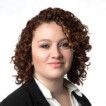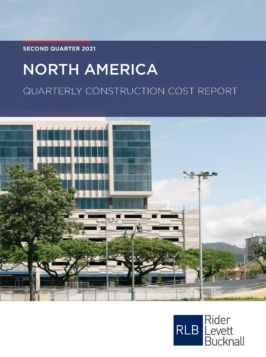RLB’s Latest QCR Reports That National Construction Costs See Their Biggest Quarter-to-Quarter Increase in More Than 20 years
Shifts in building sectors, transformational technologies, and a historic jump in construction costs show a field in still in flux
Photo credit: American Savings Bank
With data current to mid-Q2 2021 and featuring construction cost information for 14 US and Canadian markets, the QCR provides a statistical view of the state of the construction industry, detailing indicative construction costs for eight building sectors.
“One of the lessons learned from the past year is the central—and growing—role that technology plays in the AEC industries. The degree of operational efficiency that connected technologies affords is a true game changer, providing transparency, accuracy, and consistency to all stakeholders while accelerating the design process. From cost estimating to streamlining workflows to digital twins, these tools are transforming the landscape of design and construction.”
Julian Anderson, FRICS, President of Rider Levett Bucknall North America
Market highlights
- RLB reports that from January 2021 to April 2021, the U.S. national average increase in construction costs was approximately 2.91% (11.64% annualized). This is the largest quarter-to-quarter increase since we’ve recorded QCR data (previous high was 2.75% in April 2004).
- While the annualized rate is 11.64%, the year-over-year increase a more ‘normal’ 4.35%.
- Boston (3.07%), Chicago (4.67%), New York (3.38%), Phoenix, (4.29%), Portland (3.90%), and Washington DC (3.48%) are the markets with cost increases above the national average during the second quarter
- Markets seeing construction cost increases below the national average, during the second quarter, include Denver (1.49%), Honolulu (0.92%), Los Angeles (2.79%), San Francisco (2.15%), and Seattle (1.81%)
Key fiscal barometers
- The U.S. Consumer Price Index (CPI) shows a year-over-year increase, and is up 1.70% from the previous quarter
- The U.S. Gross Domestic Product (GDP) remains higher than normal, increasing from 4.3% in Q4 2020 to 6.4% in Q1 2021
- The Architectural Billings Index (ABI) reports its first index above 50 since Q4 2019, with a 55.6 reading in March 2021
FURTHER INFORMATION:



